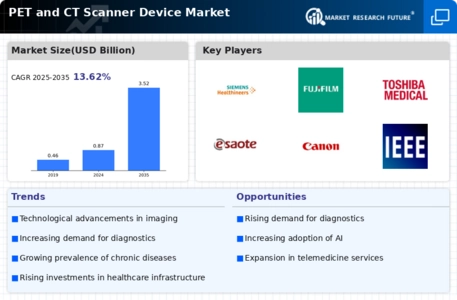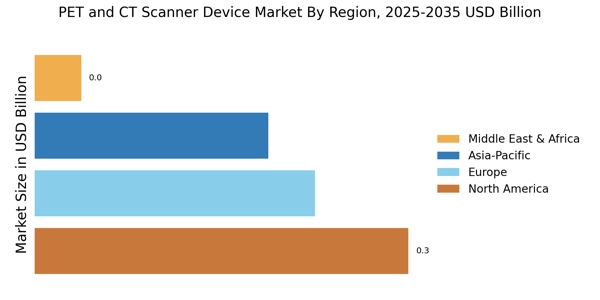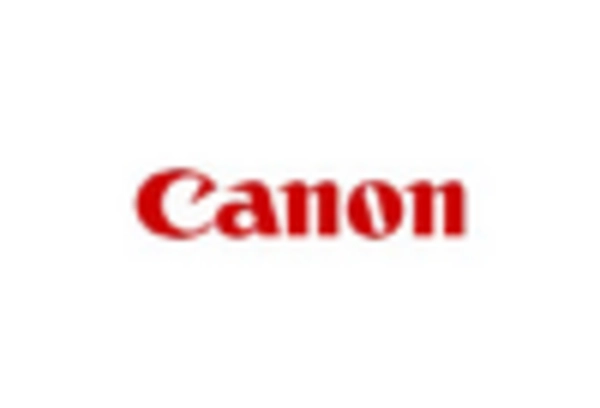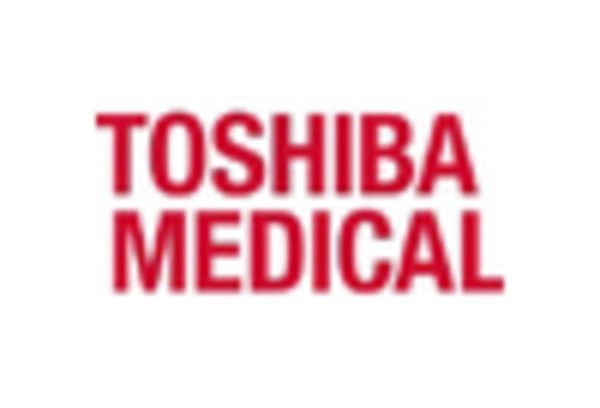Expansion in Emerging Markets
The PET and CT Scanner Device Market is experiencing robust growth in emerging markets, where healthcare infrastructure is rapidly evolving. Countries in Asia and Latin America are investing heavily in advanced medical technologies, including PET and CT scanners, to enhance diagnostic capabilities. This expansion is driven by increasing healthcare expenditures and a growing awareness of the importance of early disease detection. Market analysis indicates that the demand for imaging devices in these regions is projected to grow at a rate of approximately 8% over the next few years. This growth presents significant opportunities for manufacturers and suppliers in the PET and CT scanner market, as they seek to meet the rising needs of these developing healthcare systems.
Rising Demand for Early Diagnosis
The PET and CT Scanner Device Market is witnessing a notable increase in the demand for early diagnosis of diseases, particularly cancer. As healthcare providers emphasize preventive care, the role of advanced imaging technologies becomes more critical. PET and CT scanners facilitate the early detection of malignancies, which is essential for effective treatment planning. Market data suggests that the early diagnosis segment is expected to account for a significant share of the overall market, with projections indicating a growth rate of around 6% annually. This trend underscores the importance of PET and CT scanners in modern healthcare, as they enable timely interventions that can significantly improve patient survival rates.
Government Initiatives and Funding
The PET and CT Scanner Device Market is benefiting from various government initiatives aimed at improving healthcare infrastructure. Many governments are allocating funds to enhance diagnostic capabilities in hospitals and clinics, recognizing the importance of advanced imaging technologies in patient care. These initiatives often include subsidies for purchasing PET and CT scanners, as well as investments in research and development. Recent reports suggest that government funding in the healthcare sector is projected to increase by 10% over the next few years, which could significantly impact the adoption of PET and CT scanners. This financial support is likely to stimulate market growth, as healthcare facilities seek to upgrade their diagnostic equipment to meet rising patient demands.
Aging Population and Chronic Diseases
The PET and CT Scanner Device Market is significantly influenced by the aging population and the rising prevalence of chronic diseases. As the global demographic shifts towards an older population, the incidence of conditions such as cancer, cardiovascular diseases, and neurological disorders is expected to rise. This demographic trend drives the demand for advanced imaging technologies, as healthcare providers require accurate diagnostic tools to manage complex health issues. Data indicates that the market for PET and CT scanners is likely to expand by approximately 5% annually, reflecting the increasing need for effective diagnostic solutions in an aging society. This trend highlights the critical role of PET and CT scanners in addressing the healthcare challenges posed by chronic diseases.
Technological Advancements in Imaging
The PET and CT Scanner Device Market is experiencing a surge in technological advancements that enhance imaging capabilities. Innovations such as hybrid imaging systems, which combine PET and CT technologies, are becoming increasingly prevalent. These systems provide superior diagnostic accuracy and efficiency, allowing for better patient outcomes. The integration of artificial intelligence in image analysis further streamlines workflows and reduces interpretation errors. According to recent data, the market for advanced imaging technologies is projected to grow at a compound annual growth rate of approximately 7.5% over the next five years. This growth is indicative of the industry's commitment to improving diagnostic tools, thereby driving the demand for PET and CT scanners.


















Leave a Comment